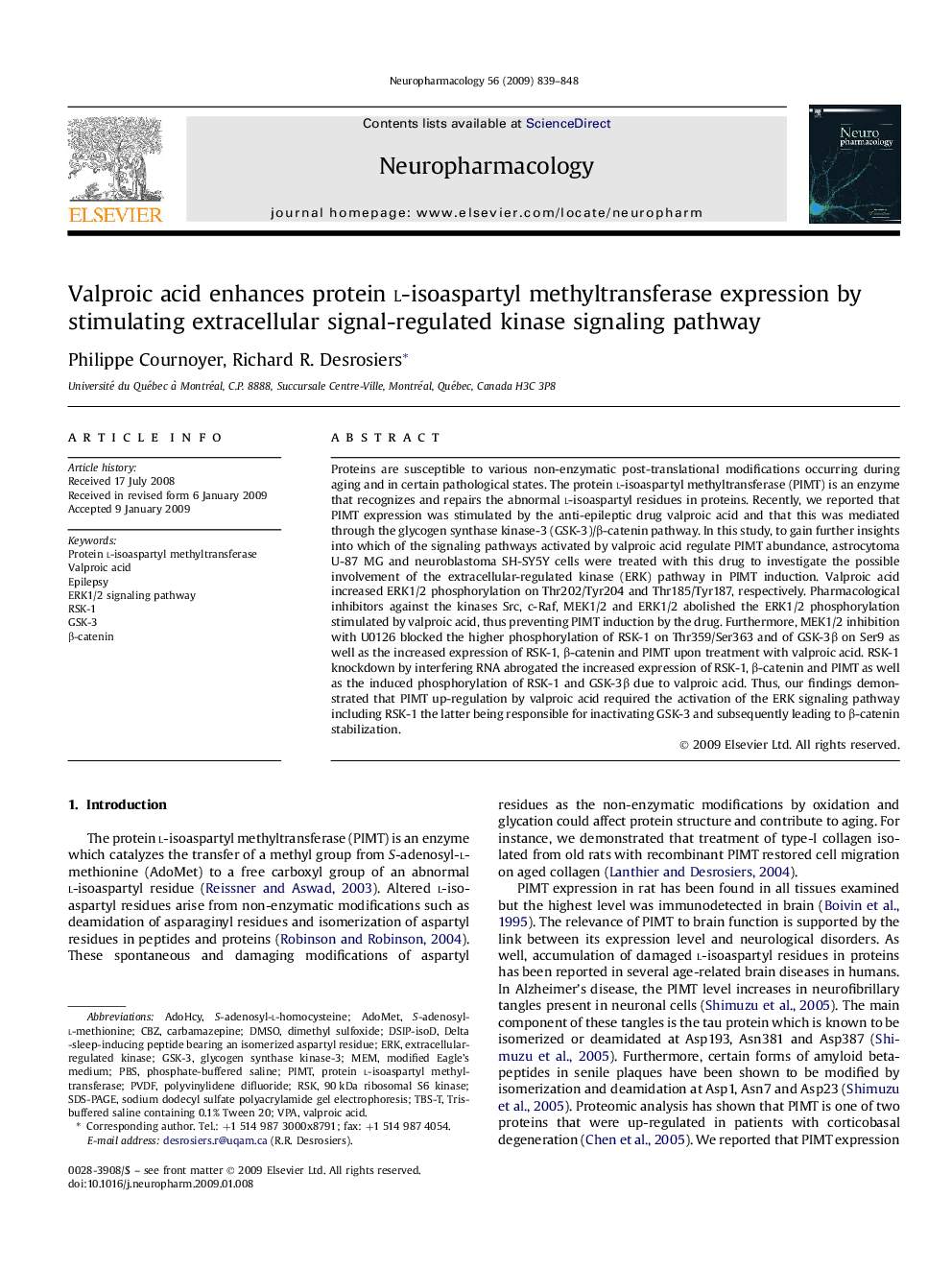| Article ID | Journal | Published Year | Pages | File Type |
|---|---|---|---|---|
| 2494121 | Neuropharmacology | 2009 | 10 Pages |
Proteins are susceptible to various non-enzymatic post-translational modifications occurring during aging and in certain pathological states. The protein l-isoaspartyl methyltransferase (PIMT) is an enzyme that recognizes and repairs the abnormal l-isoaspartyl residues in proteins. Recently, we reported that PIMT expression was stimulated by the anti-epileptic drug valproic acid and that this was mediated through the glycogen synthase kinase-3 (GSK-3)/β-catenin pathway. In this study, to gain further insights into which of the signaling pathways activated by valproic acid regulate PIMT abundance, astrocytoma U-87 MG and neuroblastoma SH-SY5Y cells were treated with this drug to investigate the possible involvement of the extracellular-regulated kinase (ERK) pathway in PIMT induction. Valproic acid increased ERK1/2 phosphorylation on Thr202/Tyr204 and Thr185/Tyr187, respectively. Pharmacological inhibitors against the kinases Src, c-Raf, MEK1/2 and ERK1/2 abolished the ERK1/2 phosphorylation stimulated by valproic acid, thus preventing PIMT induction by the drug. Furthermore, MEK1/2 inhibition with U0126 blocked the higher phosphorylation of RSK-1 on Thr359/Ser363 and of GSK-3β on Ser9 as well as the increased expression of RSK-1, β-catenin and PIMT upon treatment with valproic acid. RSK-1 knockdown by interfering RNA abrogated the increased expression of RSK-1, β-catenin and PIMT as well as the induced phosphorylation of RSK-1 and GSK-3β due to valproic acid. Thus, our findings demonstrated that PIMT up-regulation by valproic acid required the activation of the ERK signaling pathway including RSK-1 the latter being responsible for inactivating GSK-3 and subsequently leading to β-catenin stabilization.
